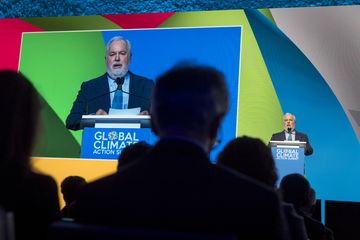IQ 5-year plan focuses on productivity, efficiency gains

“Additionally, we will selectively invest in capital investment projects that we believe will increase our competitive position and add value to our esteemed shareholders. Moreover, our efforts on optimisation will continue until the group achieves its full potential,” according to the report.
During the meeting, the general assembly approved the proposed total annual dividend distribution of QR3.6bn, equivalent to a payout of QR6 per share, representing a payout ratio of 72.2%.
In a speech, al-Kaabi announced that the group settled “almost all of its outstanding debt during 2018, making it almost a debt-free entity.”
Al-Kaabi reported that sales volumes reached 9.8mn metric tonnes, which is a “new record” for the group. Also, he said changes to the distribution strategy, migration of steel marketing, sales and distribution to Muntajat, and a general increase in demand “aided the group’s sales volumes to reach this new height.”
Since May 1, 2018, al-Kaabi said, marketing, sales, and distribution of the group’s steel products have been migrated to Muntajat. The arrangement brings both financial and operational benefits via efficiency improvement, cost reduction, a better distribution model, and operational synergies, he noted.
“The group will constantly focus on effective sourcing of raw materials, rationalisation of operations, while striving for efficiency and effectiveness to further enhance its operating expenditure,” he continued.
He said Qatar Fuel Additive Company (Qafac) operated throughout the year, without having either planned or unplanned outages. A reputed industry benchmark report has highlighted that Qafac’s performance is within the first quartile in the industry. Qafac was also ranked as the number one operator in the methanol industry last year.
Also, al-Kaabi said Qatar Fertiliser Company (Qafco) exported the highest volumes of urea in March 2018, which is considered “a world record” of export quantity in a month from a single location and from a single entity.
Al-Kaabi said 2018 was “another remarkable year” for the group, which reported a 52% jump in net profit to reach QR5bn in 2018, with earnings per share amounting to QR8.3.
He said the group’s revenue reached QR16.3bn, or a 16% jump on the previous year. The increase was aided by the combined effect of higher product prices and sales volumes, al-Kaabi noted.
“The cash and bank balances across the group reached QR13.1bn, a new record for the group. Strong cash flows from operations, optimised working capital, reduced Capex and minimal debt repayment contributed to the significant growth in the cash and bank balances,” he added.








